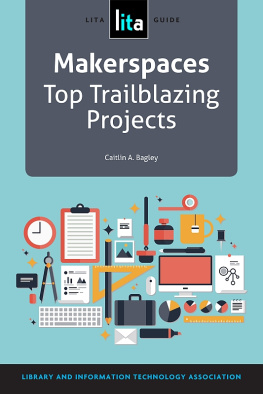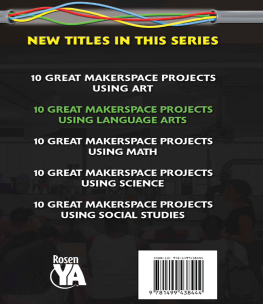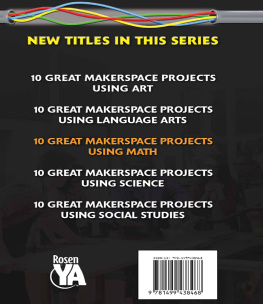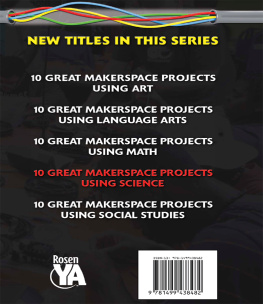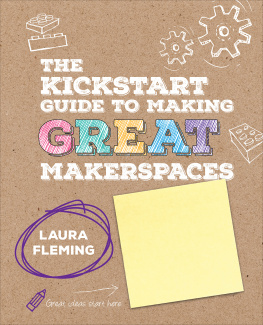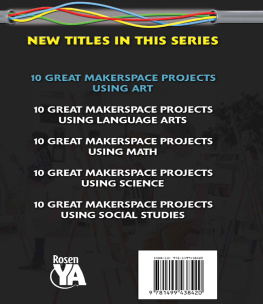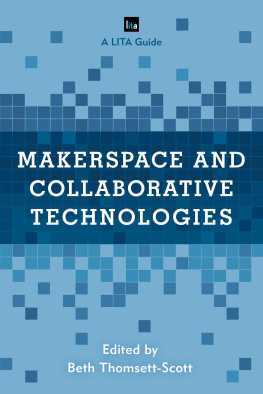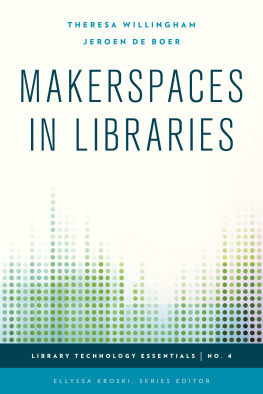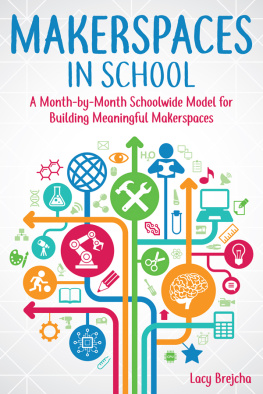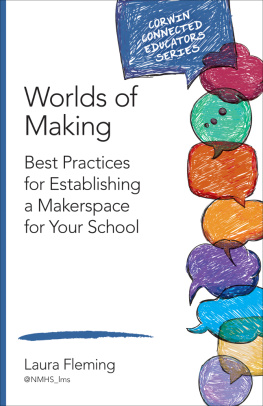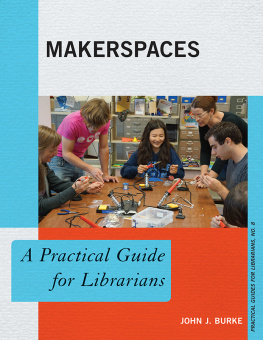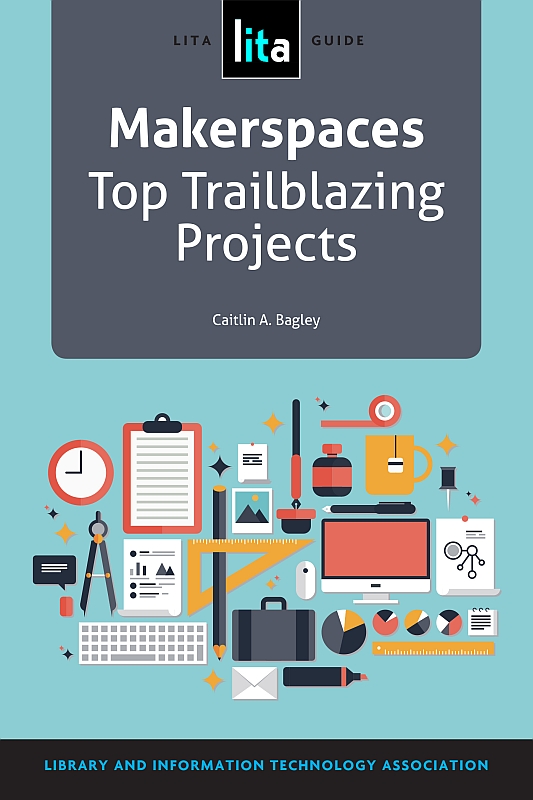
ALA TechSource purchases fund advocacy, awareness, and accreditation programs for library professionals worldwide.
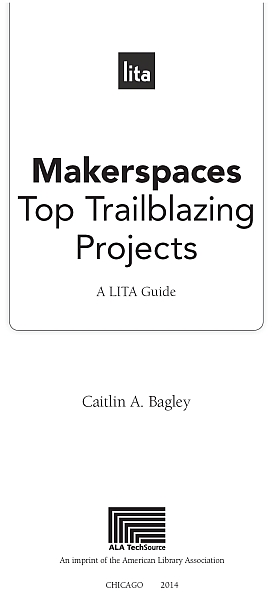
Caitlin A. Bagley is an instruction librarian at Gonzaga University in Spokane. Her research has focused on shifting library technologies and most recently on using infographics in instruction. She has authored several articles on cloud computing and infographics. She is a 2013 ACRL Immersion Teaching with Technology graduate. Bagley earned her masters degree in library science at Indiana University.
2014 by the American Library Association. Any claim of copyright is subject to applicable limitations and exceptions, such as rights of fair use and library copying pursuant to Sections 107 and 108 of the U.S. Copyright Act. No copyright is claimed for content in the public domain, such as works of the U.S. government.
Extensive effort has gone into ensuring the reliability of the information in this book; however, the publisher makes no warranty, express or implied, with respect to the material contained herein.
ISBNs: 978-1-55570-990-7 (paper); 978-1-55570-991-4 (PDF); 978-1-55570-992-1 (ePub); 978-1-55570-993-8 (Kindle). For more information on digital formats, visit the ALA Store at alastore.ala.org and select eEditions.
Library of Congress Control Number: 2013050266
Book design in Berkeley and Avenir. Cover images Shutterstock, Inc.
For Mom, Dad,
Lisa and Jeff.
Thank you.
Contents
Appendixes
Makers in the Library: Fostering Creativity and Invention
T he culture of makerspaces is all around us; it just takes some careful observance to see them. Chances are high that you are a maker yourself. Have you ever knitted, crocheted, or painted? Have you ever assembled your own home computer or modified your bike or car to go faster? Being a maker or working in a makerspace does not require you to have a high-level skill set. Rather, it teaches you new skills. In one sense, it is enlightening because no one need feel intimidated when going to a makerspace. There you will find you are not alone. Even better, you may know more than you thought you did.
When I first set out to document makerspaces across the nation, I struggled with how to define a makerspace and where exactly they could be found. As a nascent technology in libraries, they were far and few between, though as I began to research I found more and more springing up in new places. My methodology involved designing a survey that would address the physical, technological, and monetary needs, as well as the demographics of the patrons using the makerspaces that were either currently in use or in the process of being developed. I promoted the qualitative surveycomposed of twenty-four questions in three major sectionson library listservs and ALA TechSources social media channels.
As the movement was still quite young, I knew it would be hard to find enough fully operational makerspaces to describe a meaningful variety of projects. I chose to include makerspaces that were in the planning process and would be opening up in 2014, describing design and technical decisions still in process. Respondents were either self-identified as having a makerspace or recruited based on publicity about their project.
This book is best used as not a prescriptive guideline for all who wish to create a makerspace in their own libraries, but as a place to quickly gather information on what others are doingwhile also leaving room for your own individual ideas and creativities.
As digital content proliferates, the purpose of libraries is often called into question. Almost any librarian could easily defend libraries value in innumerable ways, but after one has finished with the defense, another important question remains: what are the key roles and tasks we should be doing to sustain our libraries?
***
Makerspaces operate in an almost ephemeral world. There is not a true uniform definition of what a makerspace can be, which can be both a blessing and a curse when it comes to identifying one. As you read through this book you will find all sorts of makerspaces, each doing something unique and different, all under the makerspace moniker. They live in public libraries, academic libraries, and even school libraries.
Not unsurprisingly, very little has been published on the subject of library makerspaces in general or their pedagogical backgrounds in particular. Much of the literature drawn on pedagogy was taken from similarly based projects in learning centers or communal learning environments. One common theme I found among library learning centers and media centers using new modes of teaching with technology was that learners require the space to discover and learn on their ownand as they do this, they gain a higher degree of self-satisfaction (Carmichael 2009). The act of independent creation encourages return visits. The motivation for offering a makerspace is to encourage a love of learning. In order to do so successfully, the makerspace provider must first identify a learning style or mode to promote. For example, with hands-on learning and modeling, people use a kinesthetic learning style. This is not a reliance on superior motor ability, but rather a focus on learning at ones own speed by ones own hands. Additionally, makerspaces encourage collaborative learning that has a focus on interpersonal and small group skills as well as creating a sense of accountability (I-Sha, Tiong, and Seng 2008). Naturally, different makerspaces will focus on different learning styles. A school or public makerspace that is focused on children may have a stronger emphasis on kinesthetic learning than a makerspace focused on adults, which might lend itself more to group learning. Facilitating group learningwhether through an information commons or a makerspaceis usually a core tenant of academia. Attracting more patrons to work collaboratively is consistent with the mission statements of most libraries.
Makerspaces are certainly unique and original, but the most important question librarians ask is: how are they relevant to libraries? Good question. Libraries are standing on a weird precipice right now. Our patrons need more help than ever using technology and interpreting a sometimes overwhelming glut of information; at the same time, they often view us as being bound to the old model of print. Not to knock print, but any practicing librarian knows that it is just one part of what libraries are about today. Libraries are community centers, and we should think of makerspaces as places for our communities to gather and learn how to create and build together as a community.
Inside these pages you will find examples of libraries that have taken varied approaches to makerspaces with a wide range of budgets and project offerings, as well as a few general practices that should be applicable to most libraries. They have done so. Find what intrigues you, and take a few ideas and run with them.
***
I would like to extend my gratitude to the libraries and librarians who helped me to bring this book to fruition. In particular I would like to thank: Anchorage Public Library, Brooklyn Public Library, Carnegie Public Library, Cleveland Public Library, Georgia Tech Libraries, Mesa Public Library, the Michigan Makers Group, Urbana Free Library, and Valdosta State University Libraries. In addition to these libraries, many of their staff members were willing to correspond with me. They graciously answered my survey and my many follow up emails. They include: Paul B. Baker, Melissa Morrone, Corey Wittig, C. J. Lynce, Charlie Bennett, Sarah Prosory, Ellen Gustafson, Joel Spencer, and Michael O. Holt.
Next page
